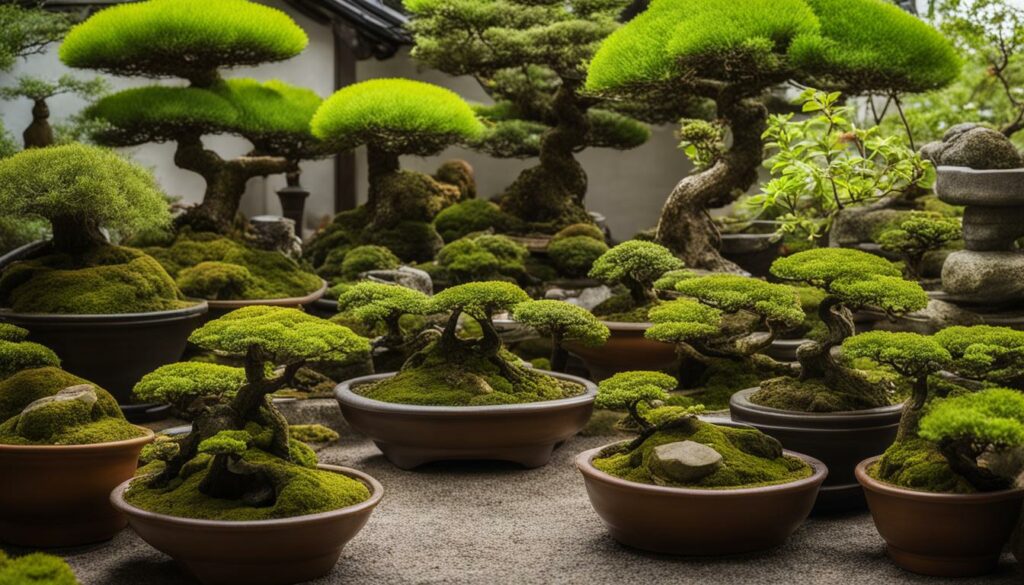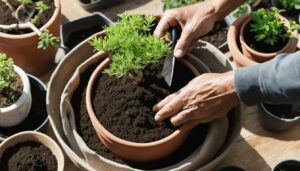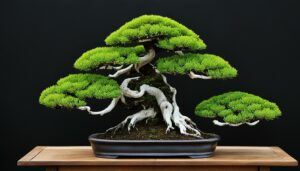If you’re looking to start your own bonsai cultivation, it’s crucial to select the right species for your specific climate. Choosing the wrong species can result in stunted growth or even death for your bonsai tree.
There are various types of bonsai to choose from and each has its own suitability for different climates in the United States. Before making your selection, it’s important to have a basic understanding of bonsai cultivation techniques and the factors that contribute to successful growth.
Consider the size, shape, and maintenance requirements of different bonsai types before making your choice. In this article, we’ll provide guidance on how to research and identify bonsai species that are well-suited for your specific climate, including warm, cold, tropical, Mediterranean, and humid climates in the United States.
With the right species selection and proper care, you can grow a thriving miniature masterpiece in your own backyard.
Key Takeaways:
- Choosing the right bonsai species is crucial for successful bonsai cultivation.
- Consider climate suitability, size, shape, and maintenance requirements when selecting a bonsai species.
- Various bonsai species are suitable for different climates in the United States.
- Research and identify bonsai species well-suited for your specific climate to ensure successful growth and care.
- Proper care practices specific to your chosen bonsai species are crucial for its health and longevity.
Understanding Bonsai Cultivation
Before diving into the world of bonsai tree cultivation, it’s essential to have a basic understanding of what it entails. Bonsai cultivation refers to the art of growing and sculpting miniature trees in small containers. It is a delicate process that requires careful cultivation techniques and attention to detail from the early stages of a plant’s life.
Several factors contribute to the successful growth of a bonsai tree. One of the key factors is soil selection. Bonsai trees require specific soil types that allow for proper drainage and nutrient absorption. Different species may also have unique soil requirements, so it’s essential to research each species’s specific needs before starting the cultivation process.
The amount and frequency of watering are also important considerations in bonsai tree cultivation. Overwatering or underwatering can be detrimental to a plant’s health, so it’s crucial to find the right balance. In addition to regular watering, maintaining proper humidity levels, and fertilizing regularly is vital for a bonsai tree’s growth.
Pruning and shaping are also critical elements in bonsai tree cultivation. Regular pruning helps to control the tree’s shape and size and encourages new growth. Wiring is another shaping technique that is used to guide branches and trunks into desired shapes, creating the distinctive, miniature form that characterizes bonsai trees.
Understanding these techniques is crucial before selecting a bonsai species. With the proper knowledge and careful cultivation techniques, you can create a stunning and unique miniature tree that will flourish for years to come.
Factors to Consider When Choosing a Bonsai Species
When it comes to selecting a bonsai species, there are several factors to keep in mind. Firstly, consider climate suitability. Some bonsai species can tolerate a wide range of temperatures, while others thrive only in specific climates. Make sure to research which bonsai species are suitable for your climate before making a purchase.
Secondly, consider the size and shape of the bonsai you are interested in. Bonsai trees come in various shapes and sizes, from tall and slender to short and stout. Determine what type of bonsai would fit best in your space before making a decision.
Lastly, keep in mind the maintenance requirements of different bonsai species. Some bonsai trees require regular pruning and repotting, while others are low-maintenance and require minimal care. Choose a bonsai species that aligns with the amount of time and effort you are willing to put into its care.
“Choose a bonsai species that aligns with the amount of time and effort you are willing to put into its care.”
Researching Bonsai Species Suitable for Your Climate
Choosing the right bonsai species for your climate is crucial. Different types of bonsai thrive in different weather conditions. It’s important to select a species that can handle the temperature and humidity levels in your region.
When researching bonsai species, start by considering the climate in your area. You can use online resources, such as the United States Department of Agriculture (USDA) Plant Hardiness Zone Map, to determine the climate zone you live in. This information will help you identify which types of bonsai are most suitable for your climate.
You should also consult with local bonsai enthusiasts or visit a local bonsai nursery for guidance on selecting species that will thrive in your climate. They can provide valuable insights and recommendations based on their experience with bonsai cultivation in your region.
Once you have identified potential bonsai species for your climate, conduct further research to determine their specific climate requirements. Look for information on factors such as temperature range, humidity levels, and sunlight exposure. This will help you select a species that can thrive in your climate and ensure the best chance of success with your bonsai cultivation.
When researching bonsai species suitable for your climate, keep in mind that some species may require more maintenance than others. For example, a species that requires constant humidity may not be suitable if you live in a dry climate where it’s difficult to maintain adequate moisture levels.
Suitable Bonsai Species for Different Climates in the United States
| Climate Type | Suitable Bonsai Species |
|---|---|
| Warm | Ficus, Juniper, Bougainvillea |
| Cold | Maple, Pine, Spruce |
| Tropical | Bald Cypress, Buttonwood, Black Olive |
| Mediterranean | Olive, Rosemary, Lavender |
| Humid | Japanese Maple, Azalea, Camellia |
Use this table as a guide when researching bonsai species suitable for your climate. Keep in mind that these are general recommendations, and specific species may perform differently depending on the microclimate in your region. Always conduct thorough research and consult with bonsai experts to ensure you select the best species for your climate.
Bonsai Species for Warm Climates
When selecting a bonsai species for warm climates, it’s important to consider their tolerance for high temperatures. Here are some bonsai species that thrive in warm climates:
| Bonsai Species | Climate Suitability | Care Tips |
|---|---|---|
| Juniper | Warm and dry climates | Water: Junipers prefer a well-draining soil and should be watered thoroughly but infrequently. Avoid overwatering as it can lead to root rot. Sunlight: Junipers need full sun exposure to thrive, but in extremely hot climates, they benefit from some shade during peak sun hours. Pruning: Prune regularly to maintain the desired shape and prevent excessive growth. |
| Ficus | Tropical and subtropical climates | Water: Keep the soil moist, but ensure proper drainage to prevent waterlogging. Sunlight: Ficus trees love warm, bright spaces and need at least six hours of direct sunlight daily. Humidity: Ficus thrives in humid environments, so consider using a humidity tray or misting the leaves regularly. |
| Bougainvillea | Mediterranean and tropical climates | Water: Bougainvilleas prefer well-draining soil, but they can tolerate a wide range of moisture levels. Sunlight: Bougainvilleas thrive in full sunlight and can handle the heat well. Pruning: Prune regularly to encourage branching and flower growth. Bougainvilleas typically flower in the spring and summer months. |
Remember to research each species before bringing it home and ensure it’s compatible with your climate and your level of experience as a bonsai cultivator. With proper care, these bonsai species can thrive in warm climates and add beauty to your outdoor space.
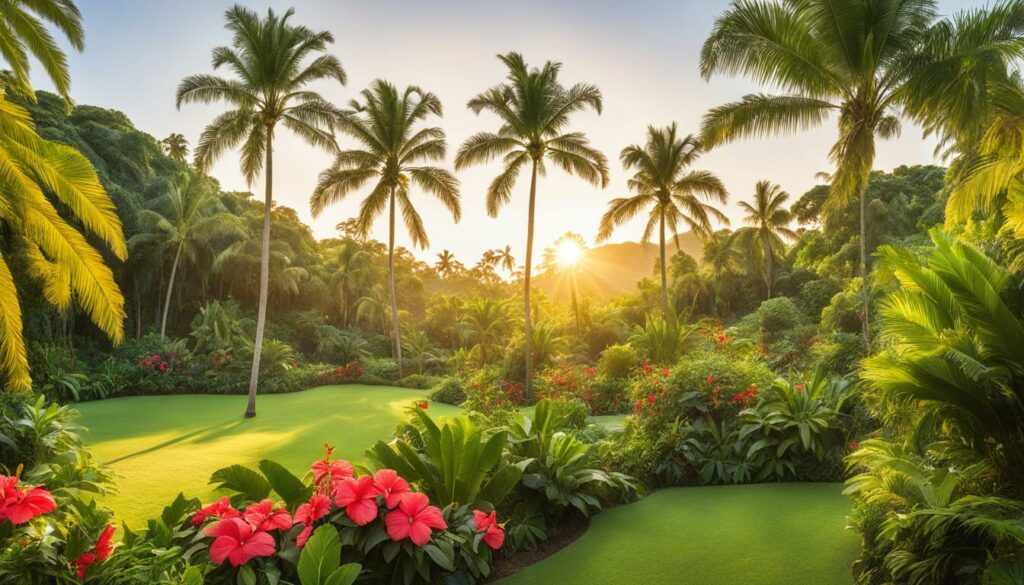
Bonsai Species for Cold Climates
Choosing the right bonsai species for colder climates is crucial for ensuring their survival. Some species can’t withstand the freezing temperatures, so it’s important to select those that are hardy and can thrive in the cold weather. Here are a few bonsai species that are suitable for cold climates:
| Bonsai Species | Climate Suitability | Care Requirements |
|---|---|---|
| Siberian elm (Ulmus pumila) | Hardy to -40°F | Needs full sun and regular watering, but can tolerate some drought |
| Trident maple (Acer buergerianum) | Hardy to -20°F | Needs partial shade and moderate watering, but can tolerate periods of drought |
| Japanese larch (Larix kaempferi) | Hardy to -30°F | Needs full sun and consistent watering, but can tolerate some drying out |
It’s important to note that even hardy bonsai species still need protection from severe weather conditions, such as strong winds or frost. A good general rule is to provide bonsai trees with some shelter during the winter months to prevent damage or even death.
Bonsai Species for Tropical Climates
If you live in a tropical climate and aspire to cultivate bonsai, you face unique challenges caused by high temperature and humidity levels. Fortunately, several bonsai species are suitable for tropical climates, and we’ve listed them below:
| Bonsai Species | Advice for Care and Maintenance |
|---|---|
| Ficus microcarpa | The overall temperature for Ficus Microcarpa should be between 60-90 degrees, meaning that it is ideally suited for tropical climates. Prune lightly throughout the year to maintain the plant’s shape and keep the soil consistently moist. |
| Bucida spinosa | Bucida Spinosa is an evergreen tree that should be watered daily in warm climates, and it prefers full sun. To ensure it thrives, put it in a spot where it can get both sun and shade during the day, and keep the soil moist. |
| Delonix regia | Delonix Regia is also known as the Royal Poinciana, and it flourishes in sunlight and tropical climates. It prefers moist, well-drained soil and should be pruned after the bloom season to maintain the tree’s shape. |
Remember that these bonsai species need proper care and maintenance to thrive in tropical climates. Always research your selected species to ensure that you are meeting all of their specific requirements and regularly monitor their health.
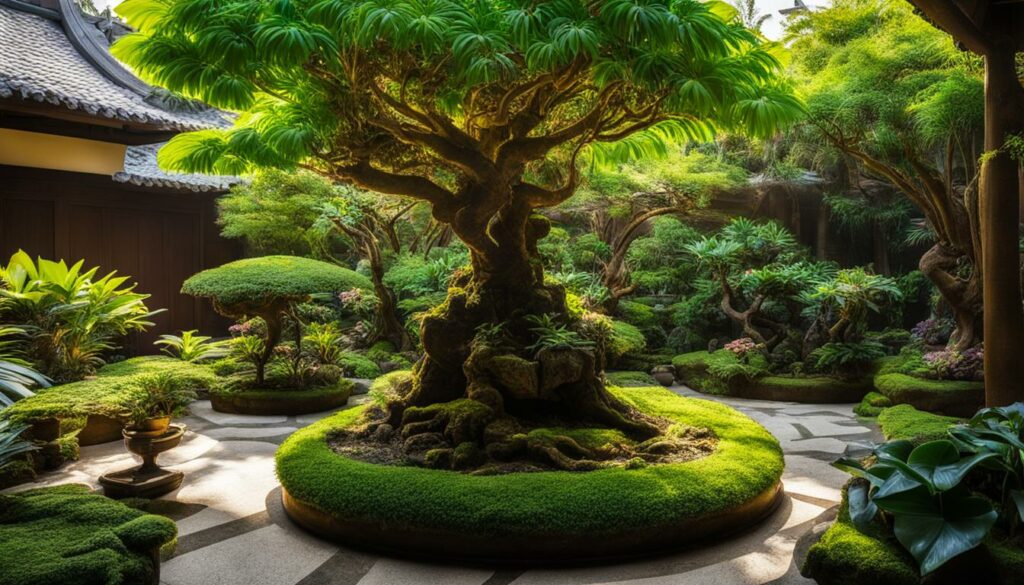
Bonsai Species for Mediterranean Climates
The Mediterranean climate is characterized by hot, dry summers and mild, wet winters. Bonsai enthusiasts living in this region should choose species that can withstand these conditions, thriving in the heat but also able to handle occasional wet spells. Species selection is essential to ensure your tree remains healthy under these specific weather patterns.
Some of the best bonsai species for Mediterranean climates include:
| Bonsai Species | Care Requirements |
|---|---|
| Olea europaea | Requires full sun and infrequent watering. |
| Punica granatum | Needs well-draining soil and plenty of sunlight, little pruning. |
| Pinus pinea | Requires full sun and moderate watering, regular pruning and shaping. |
Choosing the right bonsai species for your Mediterranean climate can be challenging but rewarding. Remember to do your research and consider factors such as the size, shape, and maintenance requirements of each species before making a selection to ensure the successful growth of your bonsai tree.
Bonsai Species for Humid Climates
If you live in a humid climate, selecting a bonsai species that can handle high humidity levels is essential. Certain bonsai species are better suited to humid environments than others. Below are some of the most popular bonsai species that can thrive in humid conditions:
| Bonsai Species | Characteristics | Best suited for |
|---|---|---|
| Ficus | Glossy leaves, aerial roots | Indoor and outdoor growing |
| Serissa foetida | Small leaves, white flowers | Indoor growing |
| Bald Cypress | Narrow needles, conical shape | Outdoor growing |
When caring for your humid-climate bonsai, consider the high moisture content in the air and adjust your watering schedule accordingly. Keep an eye out for pests and diseases that thrive in humid environments, such as spider mites and fungal infections.
Note: When selecting a bonsai species, it’s important to consider other factors such as sun exposure, soil type, and maintenance requirements, in addition to its ability to thrive in humid climates.
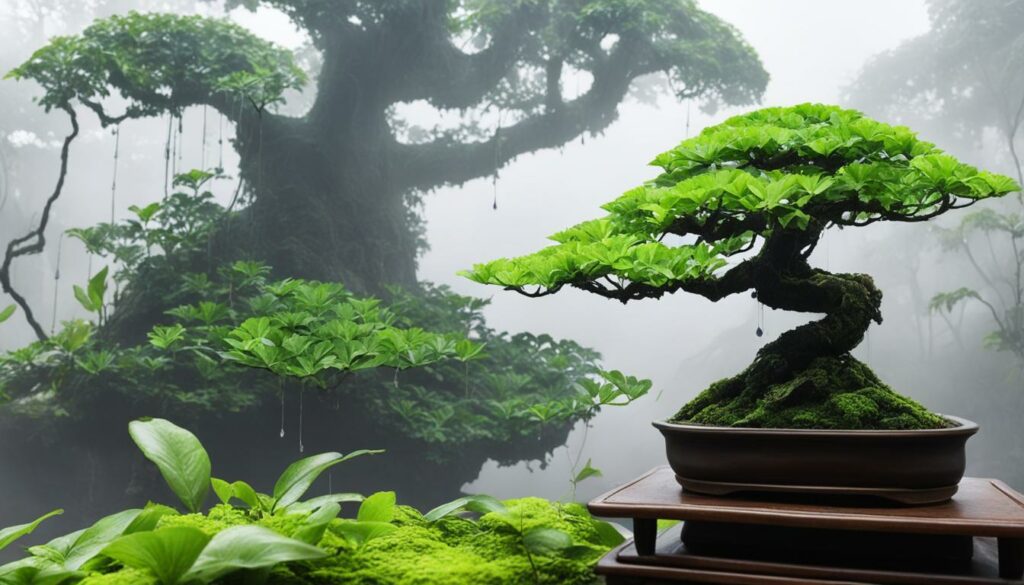
Popular Bonsai Species for all Climates
While certain bonsai species are well-suited for specific climates, there are many species that can thrive in various climate types. Here are some versatile bonsai species that can adapt to most conditions across the United States:
| Bonsai Species | Climate Suitability | Description |
|---|---|---|
| Japanese Maple | All Climates | Known for its striking red foliage during the fall season, the Japanese Maple bonsai can thrive in most climates with proper care and maintenance. |
| Chinese Elm | All Climates | As one of the most popular bonsai varieties, the Chinese Elm can withstand a range of conditions and is a great choice for beginners and experienced gardeners alike. |
| Ficus Bonsai | All Climates | Easy to care for and visually appealing, the Ficus Bonsai can grow well indoors or outdoors and can adapt to different humidity levels and temperatures. |
| Juniper Bonsai | All Climates | With its evergreen foliage and adaptability to various climates, the Juniper Bonsai is a popular choice among bonsai enthusiasts across the United States. |
When selecting a bonsai species, it’s important to consider the climate of your region, as well as the specific care requirements of the species you are interested in. These popular bonsai species can adapt to most conditions, but it’s still crucial to research their care needs to ensure their health and longevity. Happy cultivating!
Tips for Successful Bonsai Cultivation
Whether you are a beginner or an experienced bonsai cultivator, ensuring the health and longevity of your miniature tree requires careful attention and nurturing.
Choosing the right species is just the first step. Here are some general tips for successful bonsai cultivation:
- Soil: Selecting the proper soil is crucial for healthy bonsai trees. Use a well-draining soil mix specifically designed for bonsai cultivation. Do not use regular potting soil or garden soil, as they can retain too much water and lead to root rot.
- Watering: Proper watering is essential for bonsai tree health. Water your bonsai when the soil feels slightly dry to the touch. Water thoroughly until water drains out of the drainage holes. Avoid overwatering, as this can lead to root rot or other issues.
- Pruning: Regular pruning is essential for maintaining the shape and health of your bonsai tree. Prune branches to encourage new growth, and remove any dead or dying branches or leaves. Use sharp, clean pruning shears to prevent damage to your tree.
- Protection: Extreme weather conditions, such as strong winds, frost, or heatwaves, can harm your bonsai tree. Protect your bonsai with shade cloth or stakes during hot weather, and cover the tree with frost blankets during cold weather.
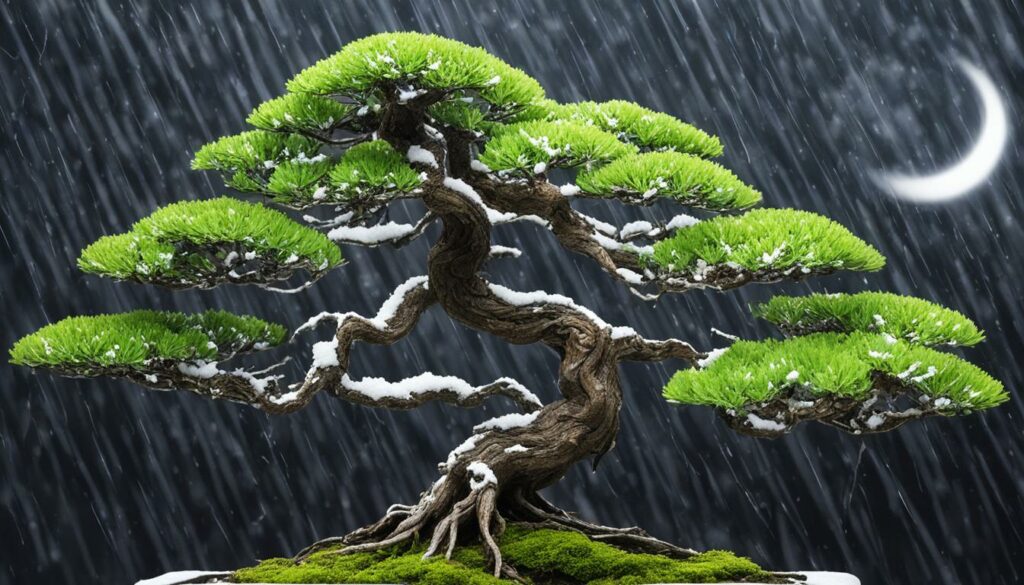
“Remember, bonsai cultivation is an art that requires patience and attention to detail. With the right care and nurturing, your miniature masterpiece can thrive and bring joy for years to come.”
Caring for Your Chosen Bonsai Species
Once you have carefully chosen the right bonsai species for your climate, it’s crucial to provide the right care to keep it healthy and thriving. Here are some essential care practices that are specific to your chosen species:
| Care Practice | Description |
|---|---|
| Watering | Proper watering is crucial for maintaining a healthy bonsai tree. Different bonsai species require different watering routines, so it’s important to research the specific needs of your chosen species. |
| Pruning | Regular pruning will encourage your bonsai tree to grow in the desired shape and size. The frequency of pruning and the method to use may vary depending on your chosen species. |
| Fertilization | Periodic fertilization is essential to ensure proper growth and health of your bonsai tree. The type of fertilizer and the frequency of use will differ among species. |
| Repotting | Repotting is an important practice for bonsai cultivation. The frequency of repotting depends on the species, but it is generally recommended to repot every 2-3 years to encourage growth and development. |
| Protection from pests and diseases | Bonsai trees are prone to pests and diseases that can damage the plants. Check your bonsai regularly for signs of infestation or disease, and take immediate action to control the problem. |
Remember to be patient with your bonsai tree – it can take years for your tree to achieve the desired shape and size. With the right care, your bonsai tree can become a true masterpiece.
Troubleshooting Common Bonsai Issues
As with any type of gardening, bonsai cultivation comes with its fair share of challenges. Even when you choose the right species for your climate and provide proper care, issues can arise that require your attention. In this section, we will discuss common bonsai problems and provide troubleshooting tips to keep your miniature tree thriving.
Yellowing Leaves
If you notice that your bonsai’s leaves are turning yellow, this may be a sign of overwatering. Be sure to check that the soil is not waterlogged, and adjust your watering schedule accordingly. On the other hand, if your bonsai’s leaves are brown and crispy, it may be time to increase watering. Your tree may also need to be repotted with fresh soil.
Pest Infestations
Common pests that can plague bonsai trees include spider mites, aphids, and mealybugs. To prevent infestations, regularly inspect your bonsai and keep it clean. If you notice pests, you can try washing the tree with a gentle soap and water solution or using a pesticide specifically designed for bonsai.
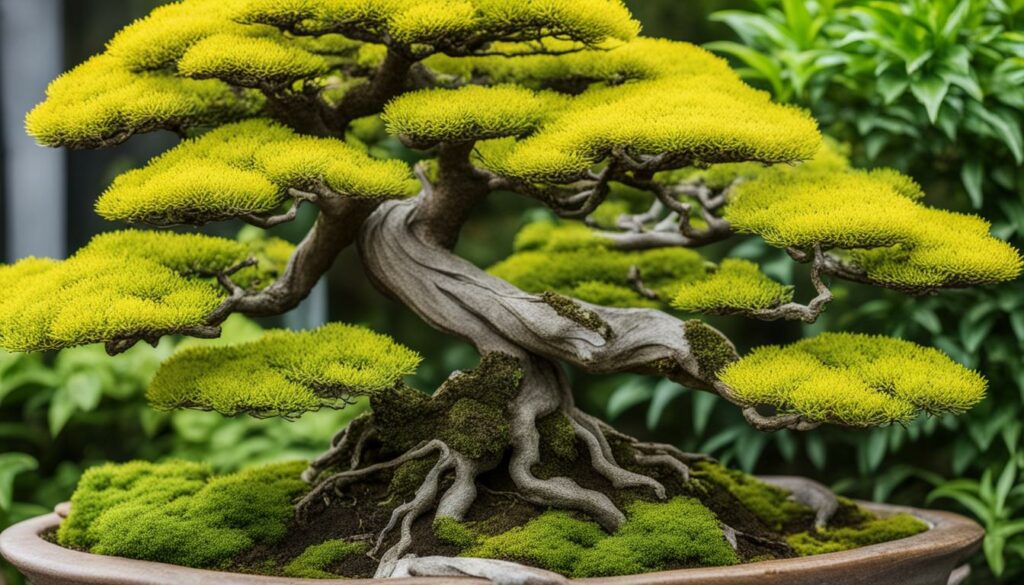
“Prevention is key when it comes to bonsai pest control. Keep your tree healthy by providing proper care and sanitation practices.”
Branch Dieback
If you notice that your bonsai’s branches are dying back, this may be a sign of disease or pest infestations. Be sure to carefully inspect the tree and take action promptly. Remove any infected or damaged branches and make sure that the tree is getting proper sunlight and ventilation.
Root Issues
Root rot and other root issues can be a common problem for bonsai trees. To prevent these issues, be sure to use free-draining soil and avoid overwatering. If you notice that your tree’s roots are growing out of the pot’s drainage holes, it may be time to repot the tree in fresh soil.
Conclusion
Choosing the right bonsai species is the first step towards successful bonsai cultivation. By taking into account factors such as climate suitability, maintenance requirements, and specific care techniques, you can grow a beautiful miniature masterpiece in your own backyard.
Remember to research bonsai species that are suitable for your specific climate. If you live in a warm climate, consider species such as the Bougainvillea or the Ficus. If you live in a cold climate, you may want to opt for species such as the Juniper or the Pine. For tropical climates, the Jade or the Chinese Elm may be a good choice, while the Olive or the Pomegranate are great for Mediterranean climates. And if you want a versatile species that can thrive in most climates, consider the Japanese Maple or the Chinese Juniper.
Once you have chosen the perfect bonsai species, ensure you provide proper care, such as choosing the right soil, watering techniques, and pruning. And if you encounter any issues, don’t worry! With the right troubleshooting tips, you can overcome common bonsai problems and ensure your tree stays healthy and beautiful.
Thank you for reading this guide on bonsai cultivation and choosing the right species. We hope it has been informative and helpful on your journey to becoming a successful bonsai cultivator!
FAQ
Why is selecting the right bonsai species for my climate important?
Selecting the right bonsai species for your climate is important because different bonsai species have specific climate suitability requirements. Choosing a species that is well-suited for your climate will increase the chances of your bonsai tree thriving and surviving.
How do I select the best bonsai species for my climate?
To select the best bonsai species for your climate, you need to consider factors such as temperature, humidity, and sunlight levels in your region. Research different bonsai species that are known to thrive in climates similar to yours and choose a species that aligns with your climate conditions.
What are the different types of bonsai trees?
There are various types of bonsai trees, including coniferous bonsai, deciduous bonsai, flowering bonsai, fruiting bonsai, and tropical bonsai. Each type has its own unique characteristics and care requirements.
Are there bonsai species that thrive in warm climates?
Yes, there are bonsai species that thrive in warm climates. Some examples include the Bougainvillea bonsai, Ficus bonsai, and Jade bonsai. These species are known for their ability to tolerate high temperatures and require proper care and watering in warm climates.
Which bonsai species are suitable for cold climates?
Certain bonsai species are suitable for cold climates. Examples include the Juniper bonsai, Spruce bonsai, and Pine bonsai. These species are hardy and can tolerate cold temperatures and winter conditions.
Can I grow bonsai trees in tropical climates?
Yes, you can grow bonsai trees in tropical climates. Bonsai species that thrive in tropical climates include the Ficus bonsai, Umbrella bonsai, and Adenium bonsai. These species require proper care in terms of watering, sunlight, and temperature control in tropical conditions.
What bonsai species are suitable for Mediterranean climates?
Bonsai species that are suitable for Mediterranean climates include Olive bonsai, Cypress bonsai, and Myrtle bonsai. These species can tolerate the hot, dry summers and mild, wet winters typically found in Mediterranean regions.
What bonsai species can handle humid climates?
Bonsai species that can handle humid climates include the Azalea bonsai, Serissa bonsai, and Hibiscus bonsai. These species are well-suited to high humidity levels but require proper care to prevent fungal diseases and maintain their health.
Are there bonsai species that can thrive in most climates?
Yes, there are popular bonsai species that can adapt to various climate types. Examples include the Japanese Maple bonsai, Chinese Elm bonsai, and Juniper bonsai. These species have a wide climate tolerance and can grow well in most regions of the United States.
What are some general tips for successful bonsai cultivation?
Some general tips for successful bonsai cultivation include choosing the right soil, providing proper watering and drainage, regular pruning and shaping, and protecting bonsai trees from extreme weather conditions and pests.
How do I care for my chosen bonsai species?
Caring for your chosen bonsai species involves following specific care instructions tailored to that particular species. This may include monitoring water and fertilizer requirements, providing adequate sunlight and temperature conditions, and regular pruning and repotting as needed.
What are some common bonsai issues and how can I troubleshoot them?
Common bonsai issues include pests and diseases, root rot, leaf yellowing, and bonsai tree losing its shape. Troubleshooting these problems involves proper identification, implementing appropriate treatments such as insecticides or fungicides, adjusting watering and sunlight levels, and consulting with experienced bonsai growers if needed.
